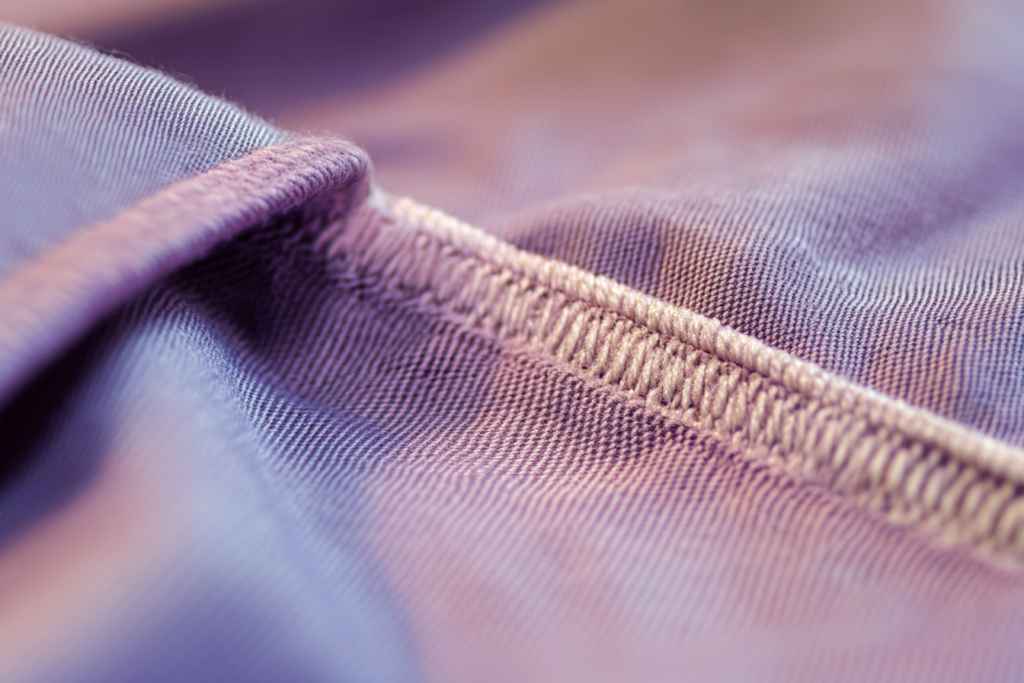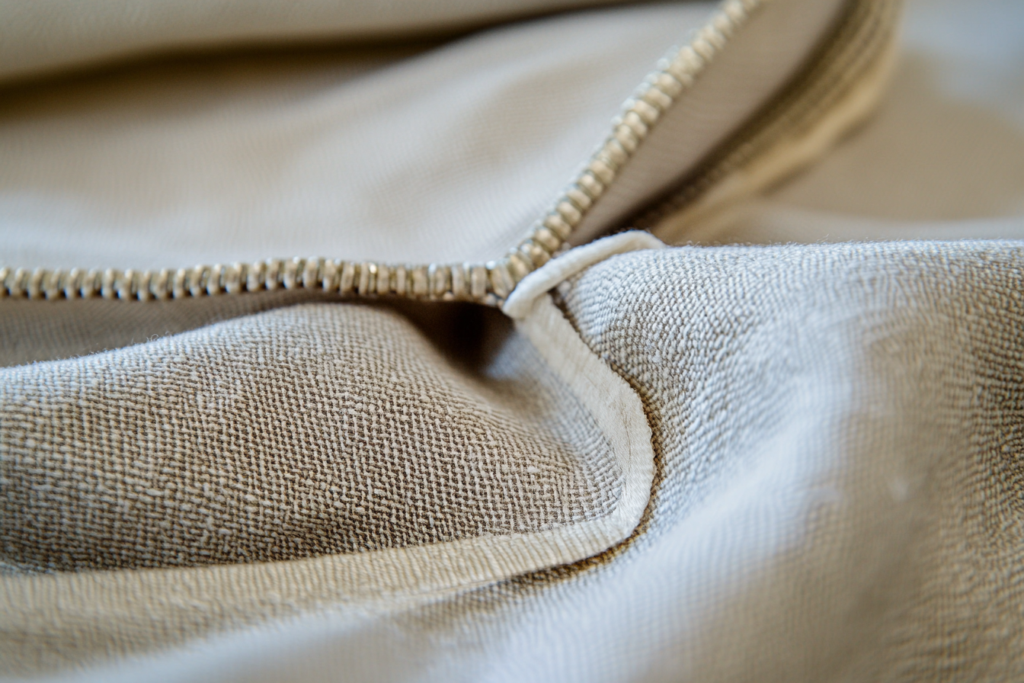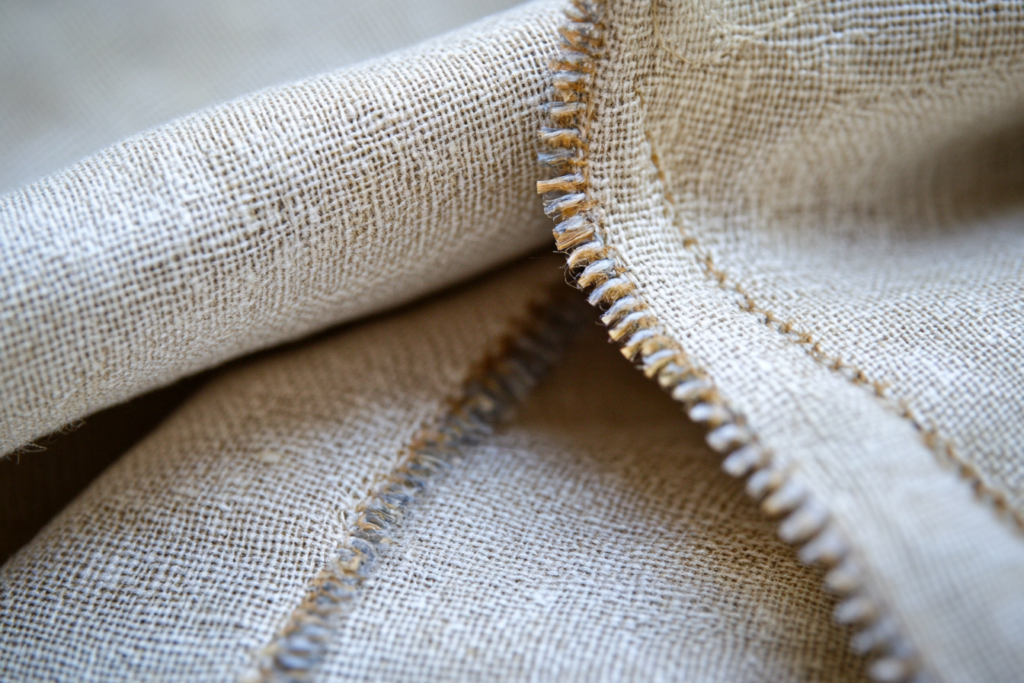Introduction: What is an Enclosed Seam?
An enclosed seam is a type of seam used in garment construction that encloses the raw edges of the fabric inside the seam, creating a clean, finished look. This technique is often used in high-end fashion, lingerie, or delicate fabrics where the inner seams need to be as neat as the outer ones. It ensures that no raw fabric edges are exposed, which prevents fraying and enhances the durability and appearance of the garment.
The enclosed seam is commonly used in situations where both sides of the garment will be visible, such as in high-quality garments, reversible designs, or where the garment will be worn next to the skin. It’s a more advanced and aesthetically pleasing method than traditional seams, providing a smooth, polished look both inside and outside the garment.


How is an Enclosed Seam Made?
Creating an enclosed seam involves a series of steps that help to encase the raw edges of the fabric between two layers. Here’s a step-by-step guide to making an enclosed seam:
- Join the Pieces:
- Start by placing the fabric pieces together, with the right sides facing each other. The raw edges should align at the seam line, ready to be stitched together.
- Sew the First Seam:
- Sew the fabric pieces together along the seam line, but leave a little extra seam allowance (typically around 1/4 inch) to allow space for the raw edges to be tucked inside later.
- Press the Seam:
- Press the seam open to flatten it, which will make it easier to enclose the raw edges.
- Fold the Seam:
- Fold the seam allowance over itself, so the raw edges are completely tucked inside. The folded seam should cover the original seam you stitched.
- Stitch the Seam:
- Carefully stitch the seam allowance in place, enclosing the raw edges inside the fold. This creates a neat finish with no exposed fabric edges.
- Press Again:
- After sewing, press the enclosed seam to ensure it’s flat and well-formed.
Why Use an Enclosed Seam?
- Clean, Professional Finish:
- The enclosed seam provides a clean, professional finish to a garment, with no raw edges visible either on the inside or outside. This makes it ideal for garments where appearance is key, such as dresses, blouses, and fine garments.
- Durability:
- By enclosing the raw edges, an enclosed seam helps prevent fraying, which increases the garment’s longevity. This is especially important for delicate fabrics like silk or lightweight cotton.
- Comfort:
- For garments that are worn directly against the skin, such as lingerie or shirts, the enclosed seam eliminates any rough edges or stitching that could irritate the skin. It’s smooth and comfortable, offering a seamless feel.
- Aesthetically Pleasing:
- Enclosed seams are often used in high-end fashion to create an elegant, refined appearance. The lack of visible stitching on the inside contributes to a more luxurious finish, ideal for garments where both the interior and exterior matter.
Common Applications of Enclosed Seams in Fashion Design
- Lingerie and Underwear:
- In intimate apparel like bras, panties, and shapewear, enclosed seams are essential for providing a smooth, invisible finish. They ensure that the garment is comfortable and free from raw edges that could cause irritation.
- Reversible Garments:
- Enclosed seams are perfect for reversible garments, such as reversible jackets or dresses. Because the inside of the garment is as important as the outside, the enclosed seam ensures that the raw edges are hidden, making both sides of the garment look polished.
- Delicate Fabrics:
- When working with delicate fabrics like silk, chiffon, or organza, enclosed seams help preserve the integrity of the fabric. The technique keeps the delicate edges from fraying or unraveling, ensuring a smooth, professional finish.
- High-End Outerwear:
- For high-end outerwear, especially garments like tailored coats or jackets, the enclosed seam gives a refined, polished appearance, both inside and outside. It also contributes to the garment’s overall structure and durability.
Enclosed Seam vs. Other Seams: What’s the Difference?
- Plain Seam: A plain seam is the most basic seam, where two fabric pieces are sewn together, with raw edges exposed on the inside. It’s a simple method but can lead to fraying over time if not properly finished.
- French Seam: Like the enclosed seam, the French seam also encloses the raw edges but is created by sewing the fabric pieces together twice, with the raw edges being enclosed between two rows of stitching. It’s commonly used in lightweight fabrics like chiffon or organza.
- Overlocked Seam: Overlocked seams use a serger to stitch the edges, preventing fraying. While this is faster than creating an enclosed seam, it doesn’t give the same refined finish, especially for garments where the inside needs to look as polished as the outside.
Conclusion: The Importance of Enclosed Seams in Garment Construction
The enclosed seam is a key technique in garment construction, providing a neat, polished finish that enhances both the durability and aesthetic of a garment. It’s particularly useful for garments made from delicate fabrics, reversible designs, or those worn close to the skin. Whether used in lingerie, outerwear, or high-end fashion, the enclosed seam helps ensure that the raw edges are neatly tucked away, contributing to a professional, high-quality finish.
By mastering the technique of enclosed seams, fashion designers can elevate their work to the next level, offering garments that are not only stylish but also expertly crafted with attention to detail.



